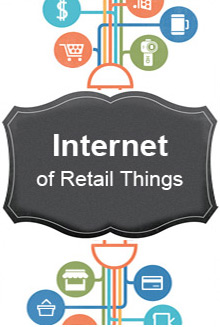In 2020, there is no conjecture that the Internet of Things has been a game changer. In fact, one would be hard pressed to find any major industry or realm of life that has been unaffected by the seismic changes brought about by IoT. Although, the initial impact of IoT was felt in the consumer space, it has rapidly percolated to the industrial world resulting in Industry 4.0 or the Industrial Internet of Things (IIoT).
As IIoT continues to gather momentum, there has been a perception that the business impact it creates could have been significantly higher. However, things are headed in the right direction as Digital Thread is the next evolution enabled by IIoT infrastructure. Digital Thread refers to the communication framework that allows connected data flow and integrated view of the asset’s data throughout the lifecycle across a traditionally siloed functional perspective.
This article is focused on delving deeper into the specific business impact of an IIoT lead Digital Thread that cuts across the entire product development and manufacturing lifecycle.
Business impact of IIoT
Industrial IoT is causing several disruptions across the value chain, however its impact can be most significantly felt across two major scenarios:
- Plant, Factory or Manufacturing Operations
- Engagement between Industrial OEMs and its customers
The former is more about achieving optimization and enhancing operational efficiencies, while the latter is focused on the creation of new business and service models. Though one might tend to look at these as two different scenarios, the impact of a well thought out and carefully executed IIoT strategy can be multifold. They key is to build the right synergies between these complementary worlds.
Let’s explore in a little more detail the different approaches that can be used for creating these synergies to maximize business impact and extract higher returns from investments made.
As depicted below, the manufacturing lifecycle typically consists of 8 different stages:
![]()
Each of these stages have different systems and tools which are deployed at individual stages to optimize operational efficiencies. Some of these tools include PLM software, HMI SCADA, Industrial automation systems, ERP systems and others.
Upon close observation, one would realize that the IIoT elements usually impact the Make, Operate and Service parts of the lifecycle. But there are systems deployed across other stages as well and for IIoT to truly live up to its promise, some of these systems must be combined to create business impacting solutions.
FOUR HIGH IMPACT DIGITAL THREAD USE CASES ENABLED BY IIOT
Although it might have taken a little time to catch on, IIoT has made significant strides over the last couple of years and we are now seeing an increase in adoption across varied industries. However, the introduction of Digital Thread carries with it the potential to significantly accelerate value creation and enhance the impact of IIoT implementations. According to me, the best use cases for digital thread are as follows:
- Enhance the design and quality of the product
- Improve parts, accessories & consumables supply chain
- Improve field service operations and predictive service
- Enablement of new business models including product as a service
Enhance the design and quality of the product
All the changes driven by technology have only resulted in a significant increase in customer expectations. The key to meeting these expectations is to optimize the design enhancements cycles and compare product quality in test versus when they are actually deployed in field conditions. The design and quality of products being shipped out of a plant can be drastically improved by corelating the data from the original design considerations with the data generated from end-of-line manufacturing along with the health check data gathered from the field.
The business impact of this could be the following:
- Design optimized for product features for customer segments
- Continuous design improvement to improve Device quality
- Lesser breakdowns in field devices
- Reduced cost and improved efficiency of service operations
Improve Parts, Accessories & Consumables Supply Chain
Having the best quality and design is still only half the battle. The focus then shifts towards the intricately complex world of supply chain and efficiently managing downstream revenue by effectively managing inventory, accessories and consumables across the value chain. The efficiency with which these requirements are fulfilled can be improved by correlating data about the inventory available at the warehouse with the current condition of products in the field.
The business impact of this could be the following:
- Improved fulfilment process efficiency
- Reduced inventory management costs of parts & accessories
- Reduced cost of operations by conducting parts planning based on failure analysis
- Reduced revenue leakage to grey market due to distribution partners’ shipment of devices to other countries
Improved field service operations and predictive service
As efficient as your supply chain operations might be, the end customer cares predominantly about their own experience and the ease with which they can maintain a product. IIoT provides the ability to redefine the experience of a customer in servicing the product by corelating the data across the stages of – Make, Operate and Service. This is made possible with real time tracking and predicting product performance and breakdown preventive servicing and repair.
The business impact of this could be the following:
- Improved SLA compliance based on maintenance contracts, including traceability to component level SLAs with vendors
- Proactive service enablement of installed products
- Lesser unscheduled downtime, improved product reliability and uptime
- Just-in-time maintenance and breakdown service, improving FTFR (First Time Fix Rates)
- Reduction in field visits leveraging remote diagnostics and improving the utilization of service engineers
Enablement of new business models including Product as a Service
IIoT is also helping in creation of new revenue generating business models, workflows and applications that support transaction, subscription and commission-based revenue streams. There is also the possibility ofselling data generated by these models, for instance, aircraft manufacturer, GE, offers efficiency and analytics services to help optimize flight procedures. To benefit from such possibilities, businesses need to effectively manage the data of all these products and customers.
For a typical industrial entity, optimized decision making and correlation of the data across the Operate, Service and Return Stages can help explore new business models with customers. This could improve fleet management and managed service metrics and optimize device usage. It could also mean improving contract management metrics using IoT data from devices and integration with contract management applications.
The business impact of this could be the following:
- Optimized device and service offerings enabling customer satisfaction and brand loyalty
- Transparency to customers on actual usage and billing
- Effective compliance against SLAs agreed upon in maintenance contracts
- Scope for additional revenue streams with new business models like
- Product as a Service
- Enablement of cross-selling, up-selling and down-selling
- Customization of maintenance contract renewal quotations based on usage
Conclusion
When looking at a large industrial organization, it isn’t uncommon to come across a lack of uniformity across different product lines and business units within the same company. Such complexity is typical of any industrial setting and it is imperative to connect these dots and ensure integration with enterprise systems to ensure the success of Industrial IoT. Digital Thread is the key to achieving this integration and ensuring transformational business results.
It is here that a technology services provider with a deep understanding of IoT and a strong industry background can add significant value. These are exciting times and the Industrial world is all set to reap the benefits brought about by the Internet of Things while consistently widening the use cases and raising the bar for innovation.

Manu Tayal is a General Manager spearheading the IoT/M2M solutions and service offerings. He comes with a rich experience of 16 years in the IT industry. Within M2M/IoT his focus is on servicing product companies build the right solutions, right from devices to cloud to mobile enabled applications. His role involves technology direction, business development and capability building.
Manu holds a Bachelor’s degree from IIT Roorkee in Electronics and Communications. You can reach him at [email protected].



